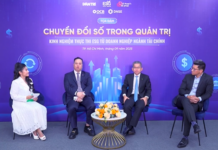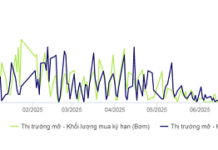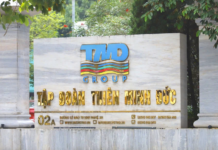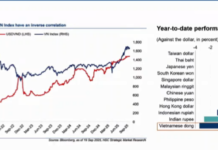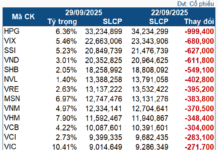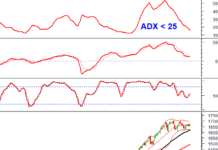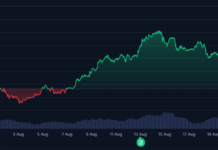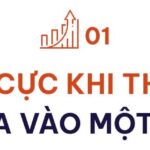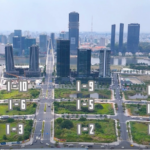
The PRIVATE 100 list clearly divides the top 100 private enterprises contributing 244.4 trillion VND, equivalent to about 12-12.5% of the total 2024 budget revenue. The top 10 private contributors account for approximately 61% of the entire list, while the bottom half contributes just over 10%.
However, when expanding the scope from PRIVATE 100 to TOP 200, the landscape changes significantly. The dominant sectors are not limited to the private sector but also include state-owned enterprises, state-affiliated companies, and large foreign-invested enterprises (FDI).
In this comprehensive view, the tax contribution structure by industry and tax type becomes more detailed. While more specific data is needed for thorough analysis, these figures provide insights into key tax risks for enterprises by industry, enabling effective risk management strategies.
Tax Fingerprints of Industries in PRIVATE 100
Analyzing the contribution ratio of each tax type to the state budget from enterprises within the same industry in PRIVATE 100 reveals distinct characteristics, thereby outlining the “tax fingerprint” for each industry.
Real Estate – Construction: Red Flags in Land-Related Taxes, Project-Based CIT, and VAT Refunds
Observing large project developers in PRIVATE 100, land-related taxes often constitute a significant proportion and are concentrated in specific projects or years. In the data, a multi-sector private enterprise with a large real estate segment shows that land taxes account for over 50% of total tax contributions. Similarly, a mid-sized developer in the middle of the list, with total taxes of 1.7 trillion VND, has a similar fingerprint: VAT 248.5 billion VND, CIT 377.5 billion VND, PIT 17.5 billion VND, and land tax 1.0584 trillion VND.

Mr. Phan Vũ Hoàng – Deputy Director of Tax & Legal Consulting, Deloitte Vietnam (Photo: Deloitte Vietnam)
This highlights three critical risks for the industry: liquidity risk (due to land obligations concentrated in one year), CIT tax base risk (revenue recognized upon handover, costs spread over multiple years), and VAT refund risk (complex deduction documentation).
Private Banking: Straight Line of CIT, VAT on Services, and PIT from a Large Workforce
Data from PRIVATE 100 shows that 16 private banks contributed nearly 46.3 trillion VND.
The industry’s consistent tax fingerprint includes: CIT leading (reflecting profits), VAT (likely from services, especially digital services, as credit activities are VAT-exempt), and PIT based on workforce size and salary policies. Core risks lie in profit quality, provisions, and ecosystem transactions—key areas of interest for tax audits.
Automotive: Heavy Burden of Indirect Taxes (VAT, Import, Excise) Alongside CIT
In PRIVATE 100, the automotive sector stands out with significant contributions: two companies paid 23.7 trillion VND and 16.468 trillion VND. While the list does not separately detail excise taxes, industry specifics indicate that VAT, import taxes, and excise taxes are major indirect taxes, alongside CIT from profit margins. Market shifts (production volume, import components, product lines) cause fluctuations in indirect taxes equivalent to profit margins.
Steel – Materials: Import VAT as the Mainstay, Cyclical CIT
Data from a leading company in the sector (total taxes of 13.426 trillion VND) shows a polarized structure: import VAT 9.55 trillion VND (71%), domestic VAT 651.6 billion VND (5%), CIT 937 billion VND (7%), PIT 133.9 billion VND (1%), land tax 353 billion VND (3%), and other 1.8005 trillion VND (13%). With a value chain heavily reliant on imported raw materials, import VAT is the primary tax contributor, while CIT fluctuates with steel price cycles.
Thus, controlling HS codes/taxable values, batch-based reconciliation, and deduction-refund conditions are critical for this sector.
Technology – Services: VAT from Services and PIT as Core, CIT Based on Profit Margins
A leading technology and telecommunications conglomerate in PRIVATE 100, with taxes of 9.227 trillion VND, exemplifies a service-heavy, labor-intensive model: domestic VAT, import VAT, CIT, and PIT are prominent.
The industry’s tax fingerprint includes: service VAT + PIT as a significant proportion, and CIT reflecting profit margins across segments (telecommunications, solutions, integration). Key tax risks include VAT documentation, service contracts, and CIT-deductible expenses, especially for complex technology projects.
Retail – Fast-Moving Consumer Goods: Mixed Structure but Predictable Bottlenecks
A leading retail conglomerate (gold, jewelry, and luxury goods, with taxes of 2.1164 trillion VND) illustrates a balanced tax fingerprint: domestic VAT 815 billion VND (39%), import VAT 483.4 billion VND (23%), CIT 555.5 billion VND (26%), PIT 254.8 billion VND (12%), and other 7.7 billion VND (0.4%).
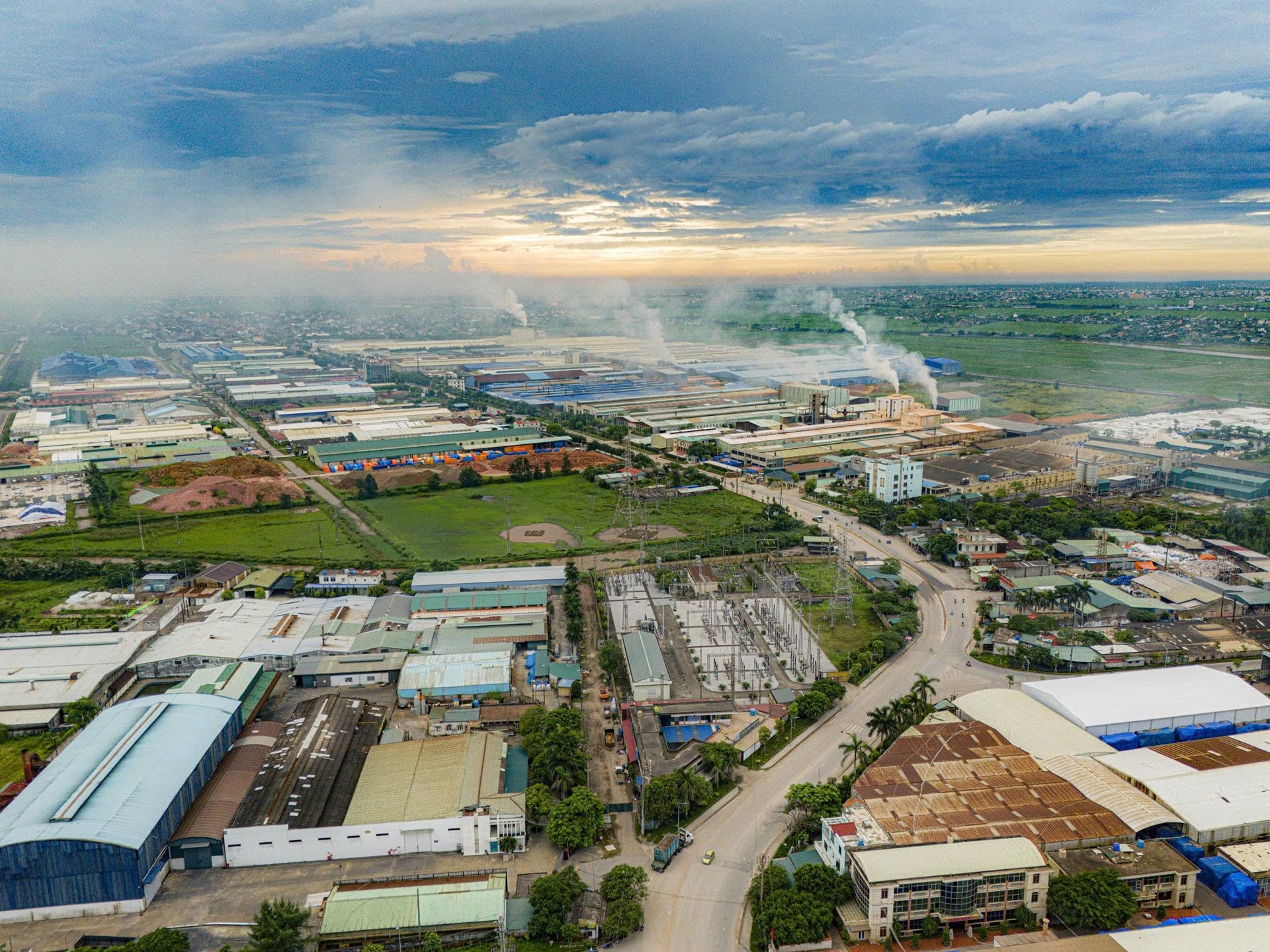
For retail/FMCG, bottlenecks likely arise not from a single large tax but from e-invoicing, ERP, and reconciliation issues. Without tight control over documentation and deductions, VAT/CIT risks may emerge.
Securities – Non-Bank Financial Services: Large PIT Due to Withholding Role
Leading securities companies (top contributor paid 2.302 trillion VND) have CIT of 471.6 billion VND but PIT of 1.8182 trillion VND (79%), similar to the second-highest contributor in the sector with PIT at around 60%. This reflects their withholding role (primarily for employees and possibly investors under specific mechanisms)—a critical obligation.
To manage tax risks, withholding, payment, and reconciliation processes must be rigorous, as technical errors or late payments can incur penalties.
Placing PRIVATE 100 within TOP 200: Industry Tax Fingerprints Become Clearer
The industry-based tax fingerprint analysis is validated when examining TOP 200 data:
Energy – Fuel – Petrochemicals show a high proportion of indirect taxes (domestic/import VAT) and significant “other taxes/fees”. Detailed company data reveals domestic VAT ranging from 16%-34%, import VAT at 13.5%-29%, and “other” at over 70% in some cases. This underscores the importance of indirect taxes and state-owned enterprises’ contributions to the budget.
Electricity – Coal – Mining exhibit high domestic VAT (due to large revenues from taxable goods/services), moderate CIT (depending on profit margins), and substantial “other” fees. TOP 200 analysis shows a consistent energy sector tax structure, providing a steady budget anchor, contrasting with the “accumulated” land-related taxes in private real estate.
Beverages – Alcohol highlight specific taxes, with “other” accounting for 40%-50% of total taxes, likely including excise taxes on alcoholic beverages. While PRIVATE 100 includes large F&B companies, TOP 200 data clarifies the pillar role of excise taxes in this sector’s budget contributions.
Telecommunications – Postal Services – State-Owned Technology: Viettel’s CIT stands out at 8.34 trillion VND (22%), while “other” taxes total 38.0053 trillion VND (82%), indicating significant non-CIT obligations. PRIVATE 100’s two large tech conglomerates show over 50% from domestic VAT, with negligible “other” taxes. Placing PRIVATE 100 within TOP 200 reveals structural tax differences between private tech and state-owned telecommunications/technology.
Banking: PRIVATE 100 outlines large private banks (around 10 with taxes over 1 trillion VND). TOP 200 adds state-owned banks, with the “Big 4” contributing 9-12 trillion VND, CIT often exceeding 60%, illustrating a “CIT axis” reflecting system-wide profits. PRIVATE 100 showcases private banking efficiency, while TOP 200 confirms the sector’s broad and sustainable budget contributions.
Local Lottery Enterprises: From ranks 49 to 77, over 10 lottery companies contribute 2.0-2.6 trillion VND each, primarily from domestic VAT (23-30%), CIT (5-7%), PIT (8-10%), and substantial “other” taxes. These enterprises are stable budget pillars for many localities.
In summary, TOP 200 demonstrates that Vietnam’s budget is a combination of several “anchor industries” with unique tax structures, each playing a vital role in the overall fiscal framework.
Tax Risk Management: Lessons from TOP 200 for the Private Sector
The strategic value of TOP 200 for the private sector, especially PRIVATE 100, lies not just in rankings but in providing a “tax structure catalog” for enterprises to assess and identify key tax risks, thereby developing industry-specific tax governance frameworks (TGF). For example:
Real Estate Enterprises: Focus on land taxes, project-based CIT, and VAT refunds. Implement processes from project legalities to cost accounting, revenue recognition, and settlements; link tax cash flow KPIs to project progress and set warning thresholds for land tax proportions exceeding certain limits.
Import-Dependent Industries (Steel, Automotive, FMCG): Prioritize import VAT, HS code classification, deduction conditions, and “other” taxes (excise, environmental fees). Essential actions include standardizing goods/material data, identifying risks by segment (ports, warehouses, factories, dealers), and e-invoice-ERP reconciliation.
Banking/Financial Institutions: Center on CIT quality (provisions, structured products, internal transactions). Develop “audit manuals” by theme (provisions, related-party transactions, services) to ensure data readiness for tax audits.
Retail/E-commerce/Digital Services: Focus on invoicing, individual seller revenues, third-party PIT, and digital service VAT.
Once key tax risks are identified, enterprises can start with simple, incremental steps:
Analyze tax quality through financial reports and risk indicators compared to industry peers (e.g., +30 key tax risk indices) quarterly or biannually;
Create a risk heat map by tax type or issue;
Develop a key tax risk register from the heat map and control measures for manageable risks;
Establish a roadmap for processes, control metrics, and data infrastructure;
Upgrade these steps into a Tax Governance Framework (TGF).
An effective TGF is operationally viable, immediately applicable, and regularly updated. It can be implemented using existing tools and real data, such as Deloitte’s Tax Analysis Toolkit (D.TAT), which assesses tax quality through financial reports and risk indicators.
With such tools, enterprises can clearly identify tax risks, make informed decisions, and optimize risk control strategies.
Note: The analysis reflects the author’s personal views and experience and may contain errors. Data is sourced from cafeF.vn’s PRIVATE 100 and TOP 200 lists. For details, visit:
https://cafef.vn/du-lieu/private100/top-100-doanh-nghiep.chn
From Steel Mill to Vietnam’s Largest Construction & Interior Superstore Giant: How Hoa Sen Group Redefined Differentiation
From a humble steel sheet manufacturer and distributor, Hoa Sen Group has meticulously crafted Vietnam’s premier ecosystem for construction materials and interior solutions. This distinction stems from strategic choices, relentless technological innovation, and an unwavering commitment to social responsibility and sustainable development.
“The Big Six: LPBank Leads the Pack in Vietnam’s Banking Sector”
LPBank’s impressive rankings as one of the top 6 private banks and among the top 14 private enterprises contributing to the national budget not only underscores its financial prowess and sustainable business performance but also reflects its commitment to social responsibility. The bank’s dedication to aligning its business practices with the nation’s journey towards long-term sustainable development is truly commendable.
Title: Experts: The Financial Clout and Contributions of Private Enterprises Have Far Surpassed the “Start-up” or “Complementary” Stages.
“The growing presence of private sector involvement in government budgets is indicative of a maturing Vietnamese economy, where resources are allocated in a more multi-pillar and balanced fashion.” – Mr. Phan Vu Hoang, Deputy General Director of Tax and Legal Advisory Services at Deloitte Vietnam, commented on the recently released PRIVATE 100 list by CafeF.
Vietnam at 80: What’s Next for the Private Sector?
The private sector has endured a tumultuous journey, evolving from a restricted entity to a pivotal force driving economic growth. As we navigate an era of integration, identifying and addressing the bottlenecks that hinder its potential to thrive are imperative.
Masterise Group: Elevating Living Standards Through Private Enterprise, Contributing to Nation-Building
As Vietnam’s urban landscape undergoes a transformative phase, the concept of “standard of living” is no longer a distant dream. It is being shaped, day by day, by businesses that understand the importance of balancing long-term responsibility and vision with economic interests – and Masterise Group is leading the way.







